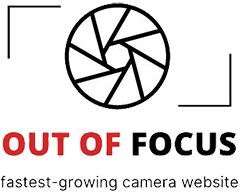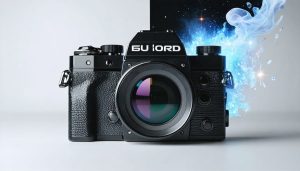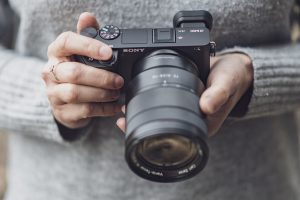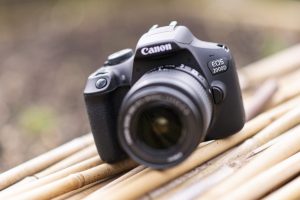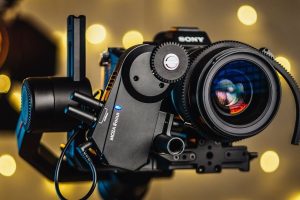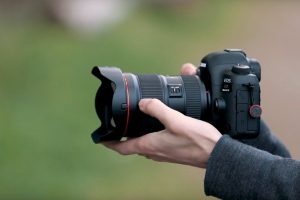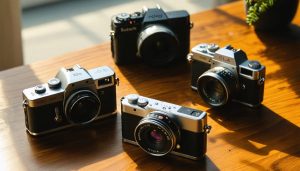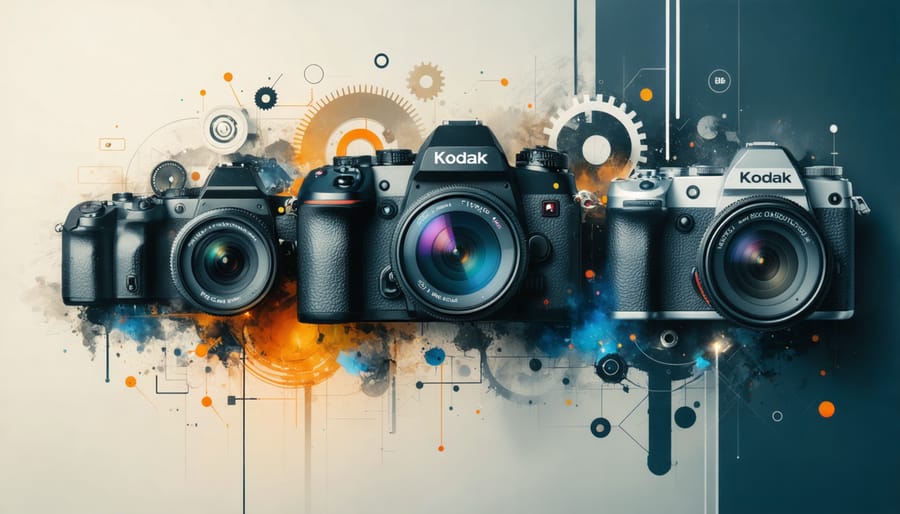
From the rudimentary camera obscura to today’s sophisticated mirrorless systems, the camera innovation journey represents one of humanity’s most transformative technological achievements. In just two centuries, we’ve witnessed an extraordinary evolution that has fundamentally changed how we capture, preserve, and share our world. What began as a simple light-proof box with a pinhole has blossomed into powerful computational imaging devices that fit in our pockets, capable of capturing moments with breathtaking clarity and sharing them instantly across the globe.
This remarkable transformation wasn’t just about technological advancement—it democratized visual storytelling, revolutionized journalism, and created entirely new forms of artistic expression. From the first permanent photograph in 1826 to today’s 108-megapixel smartphone sensors, each breakthrough has pushed the boundaries of what’s possible in image capture, while making photography increasingly accessible to everyone.
As we explore this fascinating evolution, we’ll discover how each innovation—from chemical processes to digital sensors, from manual focus to AI-powered systems—has contributed to shaping modern photography and our visual culture.
The Birth of Photography: Early Camera Innovations
Camera Obscura to Daguerreotype
The journey from camera obscura to the daguerreotype marks one of humanity’s most fascinating technological leaps. The camera obscura, Latin for “dark chamber,” was first documented by ancient philosophers who noticed that light passing through a small hole into a darkened room would project an inverted image of the outside world. This simple yet profound discovery laid the foundation for all modern photography.
During the Renaissance, artists like Leonardo da Vinci refined the camera obscura into portable boxes used for sketching. These devices featured a lens and mirrors that projected images onto paper, allowing artists to trace scenes with unprecedented accuracy. However, the crucial element missing was the ability to permanently capture these projections.
The breakthrough came in 1839 when Louis Daguerre introduced the daguerreotype process. This revolutionary method used silver-plated copper sheets treated with iodine vapor to create light-sensitive surfaces. When exposed to light in a camera, these plates captured detailed images that could be developed using mercury vapor and fixed with a salt solution. The result was a unique, mirror-like photograph of remarkable clarity.
Though daguerreotypes required long exposure times and were expensive to produce, they democratized portraiture and sparked a global photography revolution. For the first time in history, people could capture precise visual records of their world, marking the true birth of practical photography.
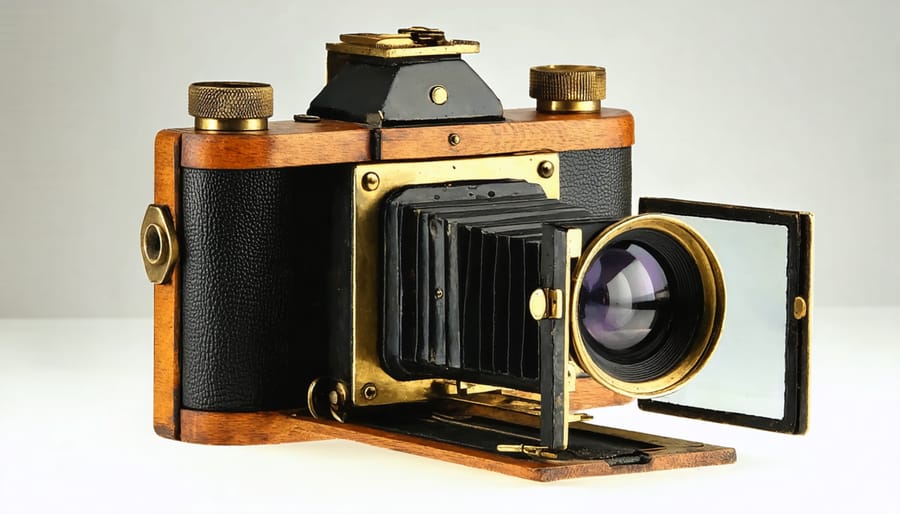
The Film Revolution
The introduction of flexible film in the late 1880s marked a pivotal moment in photography’s history, revolutionizing how people captured and preserved memories. George Eastman’s development of roll film in 1885 transformed photography from a complex, technically demanding process into an accessible hobby for everyday people.
Before this breakthrough, photographers were confined to using heavy glass plates coated with light-sensitive emulsion, limiting photography to professionals and dedicated enthusiasts. The new flexible film was lightweight, easy to transport, and could be loaded into cameras in daylight. This innovation led to the creation of the first Kodak camera in 1888, accompanied by Eastman’s famous slogan, “You press the button, we do the rest.”
The democratization of photography had begun. Amateur photographers could now take pictures without understanding the complex chemistry of development. They simply sent their cameras back to Kodak, where the film was processed, and the camera was reloaded with fresh film. This service-based model made photography accessible to the middle class, leading to an explosion in personal photography.
By the early 1900s, the availability of affordable cameras and film created a new culture of snapshot photography. Family events, vacations, and everyday moments could now be captured and preserved for future generations, fundamentally changing how people documented their lives and remembered their past.
The Age of Consumer Cameras
Kodak’s Game-Changing Box Camera
In 1888, George Eastman revolutionized photography with the introduction of the Kodak camera, but it was the launch of the Brownie camera in 1900 that truly democratized photography. Priced at just $1 (equivalent to about $31 today), the Brownie was the first camera specifically designed and marketed for the masses, making photography accessible to everyone, including children.
The Brownie’s simple cardboard box design and easy-to-use interface eliminated the need for technical expertise. Users simply pointed the camera, pulled a lever, and advanced the film – no complex adjustments or chemical processes required. The camera came pre-loaded with film for 100 exposures, and when finished, customers would send the entire camera back to Kodak for processing and reloading.
This revolutionary approach transformed photography from an elite pursuit into a popular hobby. The Brownie’s marketing slogan, “You press the button, we do the rest,” perfectly encapsulated its simplicity and appeal. Suddenly, ordinary people could document their daily lives, special occasions, and family moments without investing in expensive equipment or mastering complex techniques.
The impact was profound. The Brownie camera sparked the birth of snapshot photography, created a new market for amateur photographers, and established Kodak as a household name. Its influence extended beyond technology – it changed how people preserved memories and shared their stories, laying the groundwork for today’s ubiquitous photo-sharing culture.

The Rise of 35mm
The 35mm format revolutionized photography in the early 20th century, transforming it from a specialized pursuit into an accessible hobby for millions. Originally developed for motion pictures, the 35mm film format found its way into still photography when Oskar Barnack created the first Leica camera in 1914, though it wasn’t commercially available until 1925.
This compact format offered the perfect balance between image quality and portability, making it ideal for photojournalism and street photography. The success of Leica sparked a wave of innovation, with companies like Zeiss Ikon, Nikon, and Canon developing their own 35mm cameras. These manufacturers competed to create better mechanisms, sharper lenses, and more sophisticated light meters.
The 1950s and 1960s saw the emergence of the Single-Lens Reflex (SLR) camera, which allowed photographers to see exactly what they were shooting through the viewfinder. Models like the Nikon F (1959) became industry standards, beloved by professionals for their reliability and versatility. The format’s popularity led to standardized film processing services, making photography more convenient for everyday users.
The interchangeable lens system of 35mm cameras created a whole ecosystem of photographic equipment, from wide-angle to telephoto lenses, enabling photographers to tackle any subject matter. This standardization and flexibility helped establish 35mm as the dominant format in both professional and consumer photography for over half a century.
Instant Photography Revolution
The photography world changed forever in 1948 when Edwin Land introduced the first Polaroid instant camera. This groundbreaking invention allowed photographers to capture and view their images within minutes, revolutionizing both professional photography and casual snapshots. The magic of watching a blank piece of paper transform into a fully developed photograph captivated audiences worldwide.
Polaroid’s innovative technology relied on a complex chemical process contained within each film sheet. When the photo was taken, rollers inside the camera would spread developing chemicals across the exposure, creating the iconic white-bordered prints we know today. This self-contained development system eliminated the need for darkrooms and professional processing facilities.
The impact of instant photography extended far beyond casual use. Professional photographers embraced Polaroids for test shots before committing to expensive film exposures. Artists like Andy Warhol and Ansel Adams experimented with the medium’s unique characteristics, creating distinctive works that wouldn’t have been possible with traditional photography.
The SX-70, launched in 1972, marked another milestone in instant photography. This fully automatic, folding SLR camera produced photos that developed in daylight, unlike previous models that required manual print coating. Despite digital photography’s eventual dominance, Polaroid’s contribution to immediate image creation laid the groundwork for our modern expectations of instant photo sharing and viewing.
The Digital Revolution
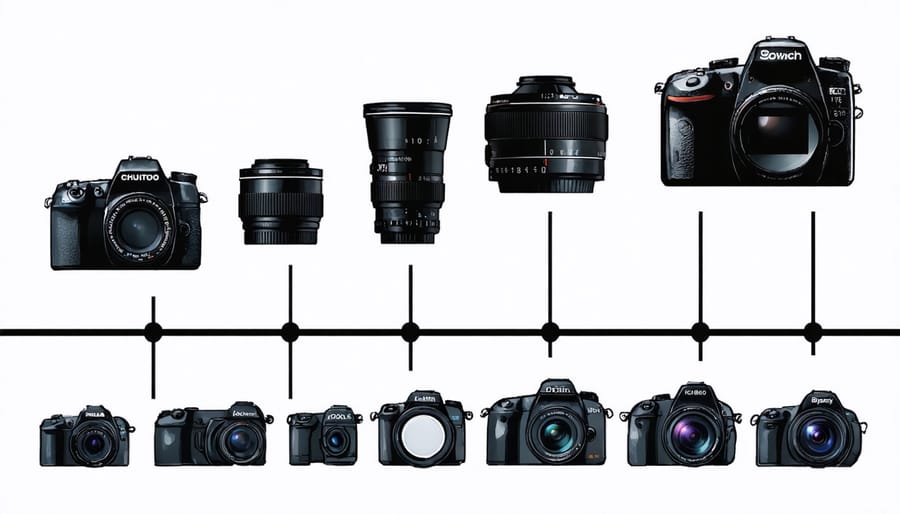
First Digital Innovations
The digital camera evolution began in 1975 when Kodak engineer Steven Sasson created the first digital camera prototype. This groundbreaking device weighed 8 pounds and captured black-and-white images at a mere 0.01 megapixels – a far cry from today’s sophisticated equipment. The images were recorded onto a cassette tape and required 23 seconds to capture a single photo.
Throughout the 1980s, manufacturers faced significant challenges in developing commercially viable digital cameras. The primary hurdles included limited storage capacity, power consumption issues, and the astronomical cost of electronic components. Early digital sensors struggled with light sensitivity and color accuracy, producing images that couldn’t match the quality of traditional film.
The turning point came in 1988 when Fujifilm unveiled the DS-1P, the first truly portable digital camera that stored images on a removable memory card. This innovation paved the way for more practical digital photography, though the camera never reached mass production.
By the early 1990s, professional digital cameras began entering the market, with the Kodak DCS 100 leading the charge. Despite its $13,000 price tag and relatively low 1.3-megapixel resolution, it represented a significant milestone in photography’s digital transformation. The camera integrated a modified Nikon F3 body with a digital sensor and external storage unit, offering photographers their first genuine taste of digital workflow.
These early innovations, while primitive by today’s standards, laid the crucial groundwork for the sophisticated digital imaging technology we now take for granted. They demonstrated both the immense potential and the considerable technical challenges that needed to be overcome in the quest to make digital photography accessible to everyone.
DSLR Evolution
The introduction of Digital Single-Lens Reflex (DSLR) cameras in the late 1990s marked a revolutionary shift in photography, combining the versatility of traditional SLR cameras with the convenience of digital sensor technology. Nikon’s D1, released in 1999, was among the first commercially successful DSLRs, offering professionals a viable digital alternative to film cameras.
DSLRs quickly gained popularity due to their unique architecture: a mirror mechanism that reflects light from the lens to an optical viewfinder, providing photographers with a true-to-life view of their subject. When the shutter button is pressed, this mirror flips up, allowing light to reach the digital sensor instead of film.
The evolution of DSLRs brought significant improvements in image quality, autofocus capabilities, and ISO performance. Early models offering 2-3 megapixels evolved into cameras capable of capturing 50+ megapixel images. The introduction of advanced features like live view, video recording, and wireless connectivity transformed DSLRs into versatile creative tools.
Canon and Nikon dominated the DSLR market, engaging in what photographers often called the “megapixel wars.” This competition drove rapid technological advancement, benefiting photographers with better low-light performance, faster shooting speeds, and more sophisticated autofocus systems.
While mirrorless cameras have recently gained prominence, DSLRs played a crucial role in democratizing professional-quality photography. They bridged the gap between film and digital, helping countless photographers transition to the digital age while maintaining familiar handling and creative control. Their impact on modern photography cannot be overstated, as they set the standard for digital imaging that continues to influence camera design today.
Mirrorless Technology
Mirrorless technology represents the most significant revolution in camera design since the digital transition. Unlike traditional DSLRs with their complex mirror mechanisms, mirrorless cameras eliminate the optical viewfinder system, resulting in more compact, lighter bodies while maintaining professional-grade performance.
The key innovation lies in the direct exposure of the image sensor to incoming light. Instead of bouncing light through mirrors and prisms, mirrorless cameras use electronic viewfinders (EVFs) that display exactly what the sensor sees in real-time. This advancement brings numerous advantages: photographers can preview exposure settings before taking the shot, focus with greater precision using features like focus peaking, and shoot in complete silence – a game-changer for wildlife and event photography.
The technology has matured significantly since its commercial introduction in 2008. Modern mirrorless cameras boast lightning-fast autofocus systems, impressive burst shooting capabilities, and excellent low-light performance. Manufacturers have developed increasingly sophisticated hybrid camera systems that combine the best of both worlds, appealing to photographers who appreciate traditional handling with cutting-edge features.
Perhaps most importantly, mirrorless technology has opened new creative possibilities. The shorter flange distance (the gap between lens mount and sensor) allows for more compact lens designs and the ability to easily adapt lenses from other systems. In-body image stabilization, previously challenging to implement in DSLRs, has become standard in mirrorless cameras, enabling handheld shooting in challenging conditions.
The impact extends beyond still photography into videography, where mirrorless cameras excel with features like 4K and 8K recording, advanced AF tracking, and professional-grade video tools. This versatility has made them the go-to choice for content creators who need both exceptional stills and video capabilities in a single device.
Smartphones: The New Photography Standard
The smartphone revolution has fundamentally transformed how we capture and share moments, marking perhaps the most significant democratization of photography since the invention of the Kodak Brownie. When Apple introduced the first iPhone in 2007, few could have predicted how mobile photography would evolve to challenge traditional cameras in both quality and convenience.
Modern smartphones combine sophisticated image sensors, powerful processors, and modern lens technologies with computational photography to achieve results that were once impossible with traditional cameras. Features like HDR, night mode, and portrait effects leverage multiple exposures and artificial intelligence to produce images that rival those from dedicated cameras.
What makes smartphones truly revolutionary isn’t just their technical capabilities, but their accessibility and connectivity. The ability to instantly edit, share, and publish photos has created new forms of visual communication and artistic expression. Social media platforms like Instagram have evolved around mobile photography, fundamentally changing how we consume and interact with images.
Professional photographers increasingly incorporate smartphones into their workflow, recognizing their unique advantages. The best camera, as the saying goes, is the one you have with you. Smartphones excel at spontaneous capture, behind-the-scenes documentation, and location scouting. Their computational capabilities enable creative possibilities that even high-end cameras can’t match, like long-exposure shots without filters or focus stacking without specialized equipment.
However, smartphones haven’t replaced traditional cameras entirely. Instead, they’ve carved out their own niche, complementing rather than competing with dedicated photography equipment. Their influence has pushed camera manufacturers to innovate, incorporating features like wireless connectivity, touch interfaces, and computational photography into their products. This symbiotic relationship continues to drive photography forward, benefiting photographers at all levels.
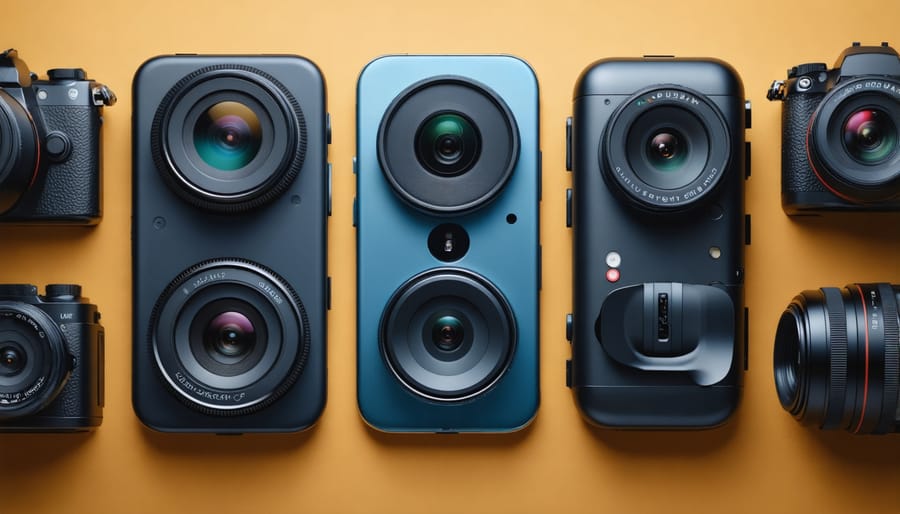
As we look to the future of camera technology, the pace of innovation shows no signs of slowing down. Computational photography continues to push the boundaries of what’s possible, with artificial intelligence and machine learning playing increasingly significant roles in image capture and processing. Smartphones are driving many of these advances, forcing traditional camera manufacturers to reimagine their approach to photography.
We’re seeing the emergence of new sensor technologies that promise better low-light performance and dynamic range than ever before. Quantum image sensors and organic semiconductors could revolutionize how cameras capture light, while advanced AI algorithms might enable features we can only dream of today, like perfect focus selection after the shot or the ability to remove unwanted elements seamlessly.
The line between still photography and video continues to blur, with high-resolution sensors capable of extracting professional-quality still images from video footage. Virtual and augmented reality are also influencing camera development, as manufacturers work to create devices that can capture immersive experiences in three-dimensional space.
Yet amidst all this technological progress, the fundamental goal remains unchanged: to capture and preserve moments that matter. Whether it’s through traditional cameras, smartphones, or whatever new devices emerge, the future of photography will continue to be shaped by our desire to tell stories and share experiences through images.
The camera’s evolution is far from over – it’s simply entering its next exciting chapter.
